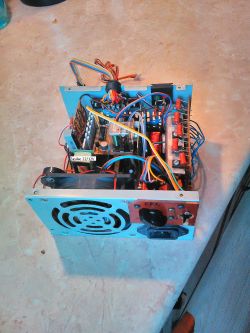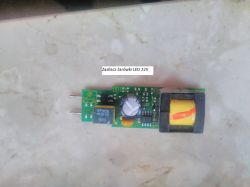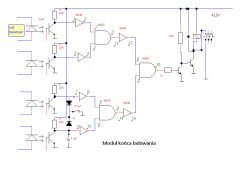FAQ
TL;DR: A repurposed ATX supply delivers 1 A constant-current to 2-5-cell Li-ion packs, completing a 2000 mAh 4-cell in about 2 h [Elektroda, szon, post #17358035] “Balancing prevents dangerous overcharge” [Elektroda, szon, post #17359285]
Why it matters: safe DIY fast-charge from surplus PC hardware.
Quick Facts
• Input source: recycled ATX/AT PSU, 12 V rail rated 8–15 A typical [ATX Spec, 2012].
• Supported pack size: 2 S – 5 S Li-ion (≤ 21 V) [Elektroda, szon, post #17357629]
• Factory-set charge current: 1 A; adjustable via TL494 divider 0.2–3 A range [Elektroda, szon, post #17358035]
• Passive balancer bleed: approx. 160 mA per cell at 4.2 V (*Zajic balancer datasheet*).
• Maximum safe cell voltage: 4.20 ± 0.05 V [TI, 2016].
1. What voltage and current does the modified charger provide?
The TL494 controls the 12 V rail to reach 4.2 V × cell-count, so 8.4 V–21 V. Current is limited to 1 A by a resistor on the second error amplifier [Elektroda, szon, post #17358035]
2. How is charging current adjusted?
A resistor divider on the unused TL494 error amplifier sets the sense voltage. Changing R1 from 4.7 kΩ to 1.6 kΩ raises current from 1 A to about 3 A [Elektroda, szon, post #17485003]
3. Does the charger feed each cell separately or the whole pack?
It charges the entire pack as one load and uses a passive balancer to keep cell voltages equal [Elektroda, szon, post #17387029]
4. Why is 10 A balancing impractical?
Standard JST-XH balance leads are 22–26 AWG; 10 A would overheat them within seconds, melting insulation [Elektroda, lechoo, post #17359130]
5. Can the balancing current be adjusted?
No. The chosen bleed balancer has fixed resistors; it only shunts cells once they hit 4.2 V [Elektroda, szon, post #17359285]
6. How long to fill a 2 Ah 4-cell pack?
At 1 A constant-current/constant-voltage, typical time is about 2 h, then 20 min taper until 100 mA tail [Elektroda, szon, post #17358035]
7. What protections are included?
A charge-detection module stops current when any monitored cell exceeds 4.20 V, and a fan turns on only above set temperature to prevent overheating [Elektroda, szon, post #17357629]
8. What happens if one of five cells is missing?
The designer omits fifth-cell monitoring intentionally; if charging 5 S you must ensure every cell is present or disconnect the pack [Elektroda, szon, post #17387029]
9. Is a 13-cell version feasible?
Yes, but you need a 55 V capable supply, a higher-voltage balancer, and isolated cell-monitor ICs; the shown ATX hardware cannot exceed 5 S safely [TI, 2016].
10. How efficient is the setup?
ATX supplies run 75–85 % efficient at a 1 A, 20 V load. Heat mainly comes from the balancer and rectifier losses [ATX Spec, 2012].
11. Three-step conversion recipe
- Remove ATX feedback; route TL494 pin1/2 to external voltage divider per cell count.
- Enable second error amplifier; set Rcurrent for desired amperes.
- Add passive balancer board and cell sense harness. Done.
12. What common mistake damages cells?
Connecting the pack before setting current can dump full ATX rail current (≥15 A) into cells, causing thermal runaway within seconds [Elektroda, szon, post #17358035]
13. What wire size suits balance leads at 160 mA?
26 AWG silicone wire drops <50 mV at 0.16 A over 15 cm, keeping balancing precise and cool [IEC 60228].
14. Expert tip for faster charging
“Add a switch to select quick 2 A and slow 0.5 A modes,” advises szon [Elektroda, 17485003]













